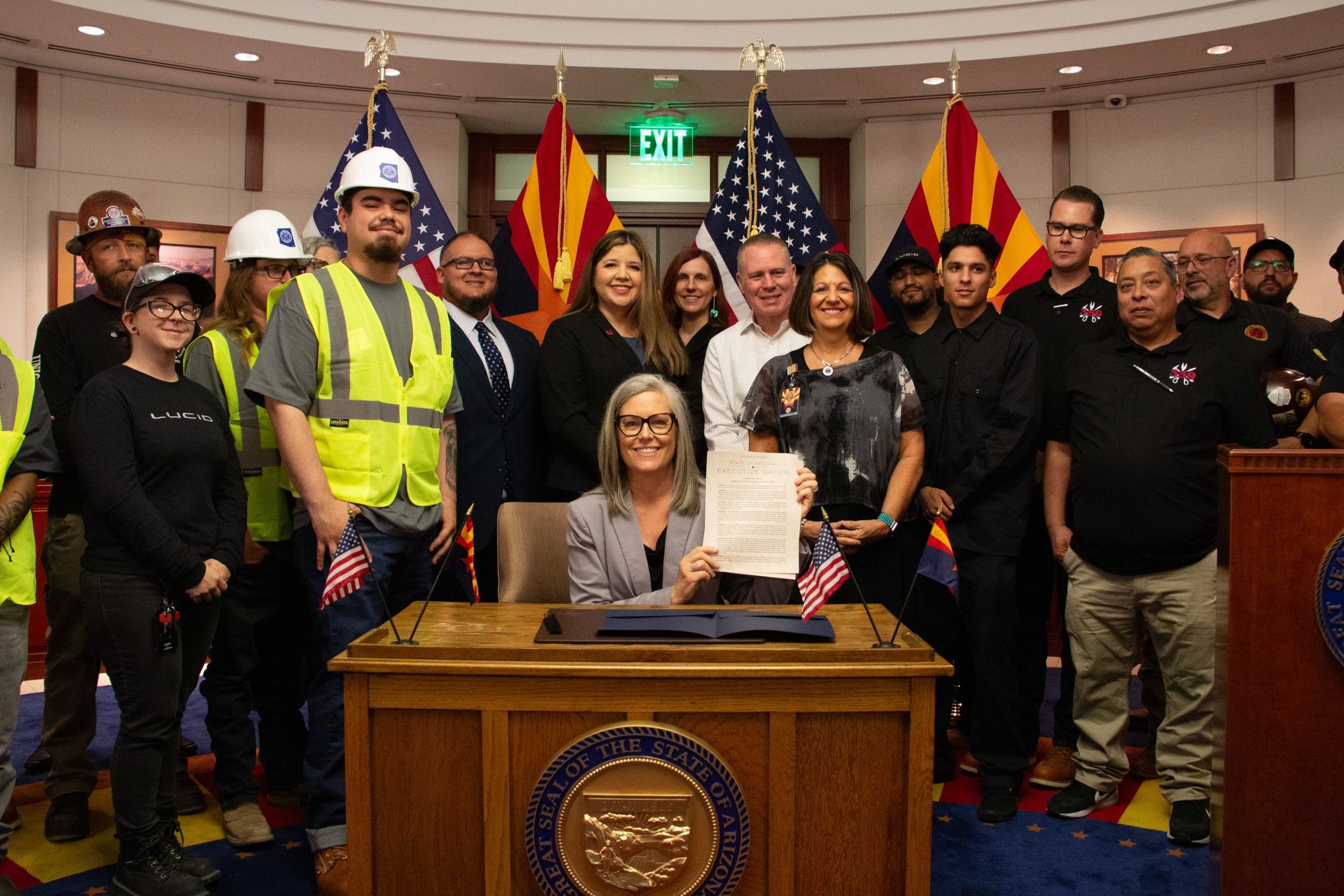Infra
States Capitalize on Federal Infrastructure Investments to Expand Workforce Development

Since 2021, a wave of federal infrastructure investments has provided states with historic levels of funding for economic development and industrial growth. The Infrastructure Investment and Jobs Act (IIJA), CHIPS and Science Act, and Inflation Reduction Act (IRA) represent enormous economic opportunity for states, and each program will require an available and skilled workforce for successful implementation. Last week, Arizona Governor Katie Hobbs issued an executive order designed to coordinate the state’s workforce development strategy and deliver the talent Arizona needs to meet this unique moment.
As detailed in the executive order, Arizona will need to fill at least 400,000 jobs by 2030, including 6,000 new manufacturing jobs, 20,000 new construction jobs, 12,000 new green energy jobs, and 16,000 new broadband and IT jobs. To meet this demand, Governor Hobbs is directing state agencies receiving relevant federal dollars to allocate at least 1% of allowable program funds for on-the-job training and other workforce development activities in these key industries.
To coordinate these efforts, the executive order creates the Governor’s Workforce Cabinet – a new entity that will execute the Governor’s workforce development policy agenda and lead stakeholder engagement across state government. Comprised of 18 state entities including commerce, transportation, and broadband, the Cabinet will work in alignment with the vision and priorities set by the Workforce Arizona Council.
The Cabinet will also identify and pursue opportunities to better connect populations who have been historically underserved in Arizona – including veterans, members of Tribal Nations, people with disabilities, women, and justice-involved individuals – with employment and training opportunities. The executive order directs the Cabinet to establish working groups comprised of public and private partners to coordinate specific workforce development efforts related to each of these populations as well as eight of the state’s priority industries.
The new executive order contains additional directives to align the state workforce system with federal investments – including standard reporting for all workforce development programs in a soon-to-be established statewide inventory, and interagency data sharing so policymakers are better equipped to measure progress on the Governor’s goals. The order builds on a number of Arizona’s strategic investments in the infrastructure talent pipeline, including the first-ever semiconductor registered apprenticeship, advanced manufacturing workforce accelerators, increased funding for construction apprenticeships, and partnerships with community colleges to promote training in high-wage, high-demand sectors.
Governor Hobbs is now the third Governor to take executive action that addresses the lack of a legislated role and dedicated funding for workforce development across IIJA, CHIPS, and IRA. In July 2023, Pennsylvania Governor Josh Shapiro issued Executive Order 2023-17 – a first-in-the-nation policy which establishes the Commonwealth Workforce Transformation Program and will leverage new federal funds to reimburse employers for up to $40,000 per employee for expenses including wages, payroll taxes, supportive services, and other apprenticeship-related expenses. In April 2024, Michigan Governor Gretchen Whitmer issued Executive Directive 2024-1, which codifies similar cross-agency collaboration called for by Governor Hobbs to execute the state’s workforce development activities related to new federal investment.
Earlier this year, West Virginia Governor Jim Justice convened key stakeholders for the state’s Infrastructure Funding Summit, where the group discussed innovative workforce development strategies for deploying IIJA funds to meet new demand. The Governor’s Office of Planning & Budget under Utah Governor Spencer Cox established an “IIJA Opportunity Tracker,” which helps ensure the state’s administration of the IIJA is aligned with Utah’s workforce needs.
The innovative policymaking enacted by Governors Hobbs exemplifies the kind of “whole of government” approach that will be required to grow state economies in today’s historically tight labor market. As states move into a critical phase of these new federal programs, Governors’ leadership in setting an implementation strategy that best suits their state will be key to growing their state economy.
For more information on NGA’s work to support Governors workforce development policy efforts, contact Jack Porter, Program Director for Workforce Development and Economic Policy.










